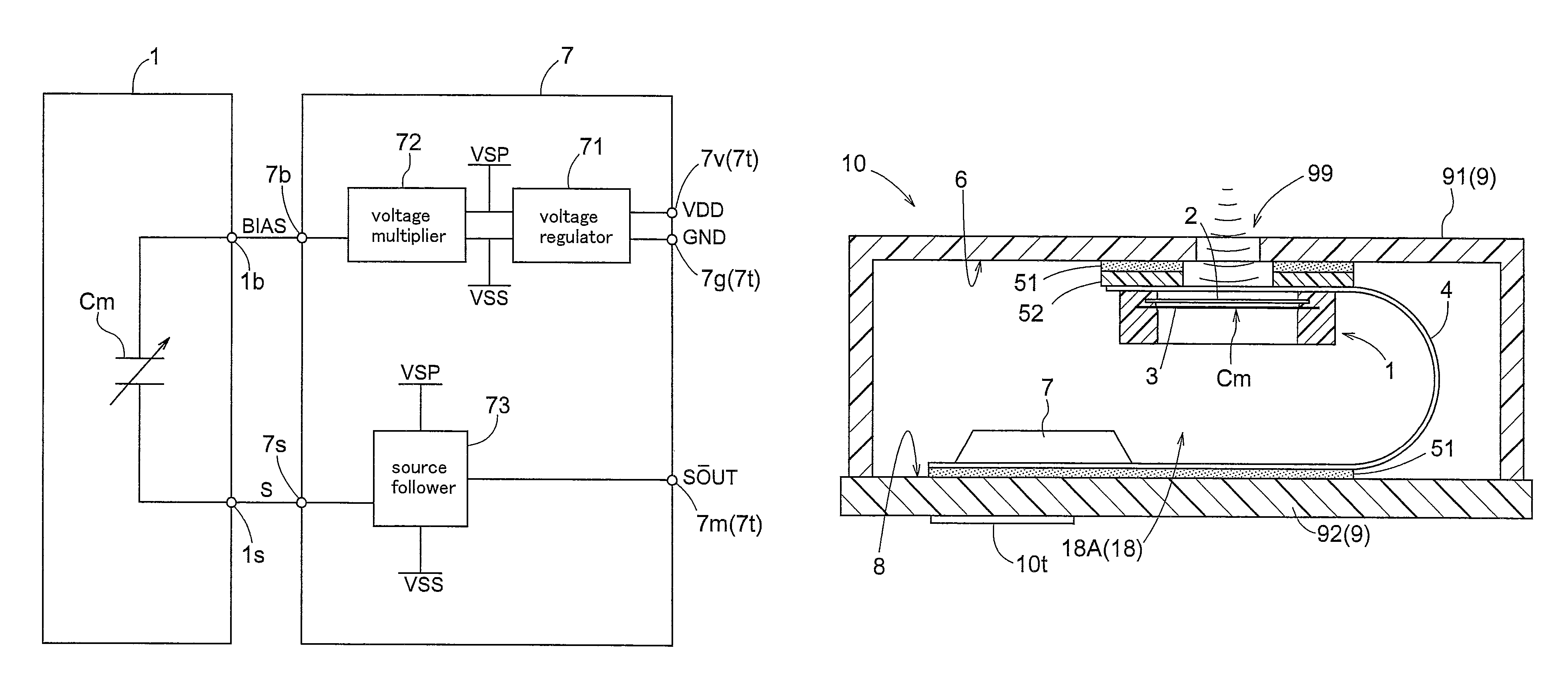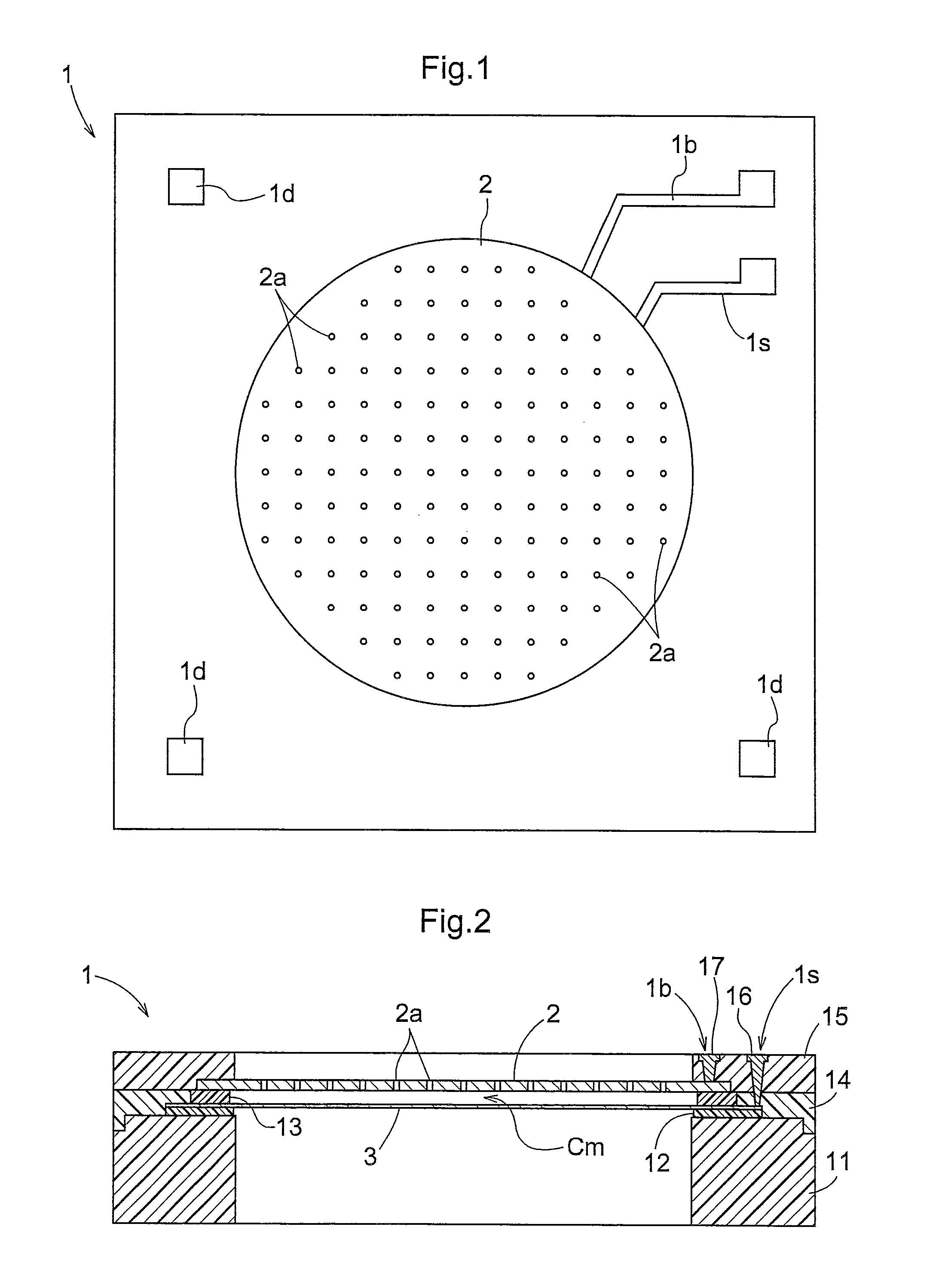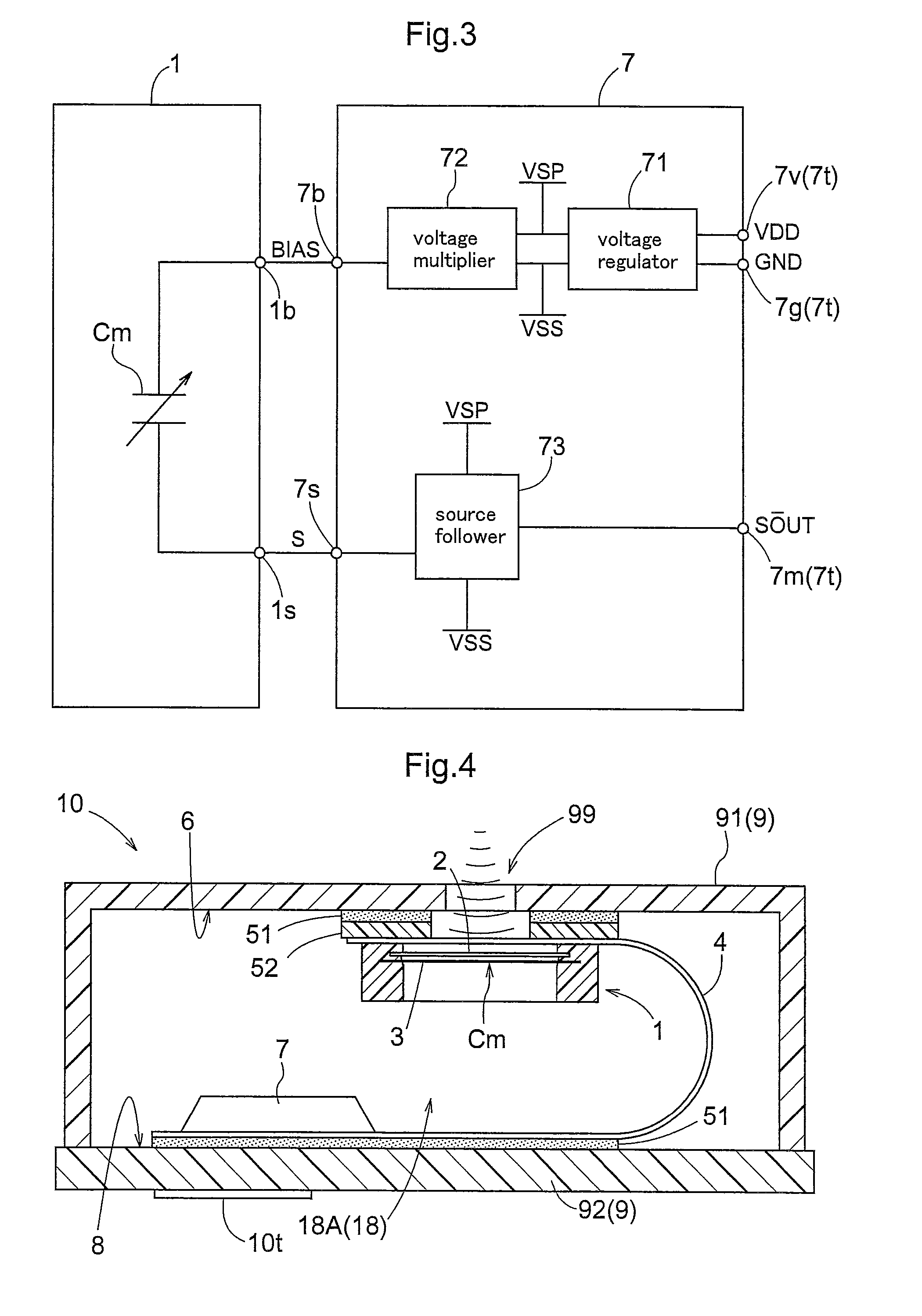Microphone
a microphone and microphone technology, applied in the field of microphones, can solve the problems of reducing the degree of freedom of layout, unable to provide the microphone terminal on the rigid substrate, and imposing restrictions on the layout of the mems capacitor inside the housing, so as to reduce the noise resistance, increase the degree of freedom, and the effect of reducing the noise resistan
- Summary
- Abstract
- Description
- Claims
- Application Information
AI Technical Summary
Benefits of technology
Problems solved by technology
Method used
Image
Examples
Embodiment Construction
[0029]Next, embodiments of the present invention will be described with reference to the accompanying drawings. An MEMS capacitor 1, as is well-known, is a capacitor manufactured by the MEMS (micro electro mechanical systems) technique, with using a semiconductor processing technique from a monocrystal silicon substrate. As shown in FIG. 1 and FIG. 2, the MEMS capacitor 1 includes a back electrode plate 2 defining many holes 2a, and a diaphragm plate 3 which oscillates in response to a sound. Between the back electrode plate 2 and the diaphragm plate 3, a space is created to form a capacitor Cm. The back electrode plate 2 and the diaphragm plate 3 are formed of electrically conductive material. The back electrode plate 2 is connected to an electrode 17 which forms a terminal 1b on the outer surface of the MEMS capacitor 1. Further, the diaphragm plate 3 is connected to an electrode 16 which forms a terminal is on the outer surface of the MEMS capacitor 1. Between a silicon substrate...
PUM
 Login to View More
Login to View More Abstract
Description
Claims
Application Information
 Login to View More
Login to View More - R&D
- Intellectual Property
- Life Sciences
- Materials
- Tech Scout
- Unparalleled Data Quality
- Higher Quality Content
- 60% Fewer Hallucinations
Browse by: Latest US Patents, China's latest patents, Technical Efficacy Thesaurus, Application Domain, Technology Topic, Popular Technical Reports.
© 2025 PatSnap. All rights reserved.Legal|Privacy policy|Modern Slavery Act Transparency Statement|Sitemap|About US| Contact US: help@patsnap.com



